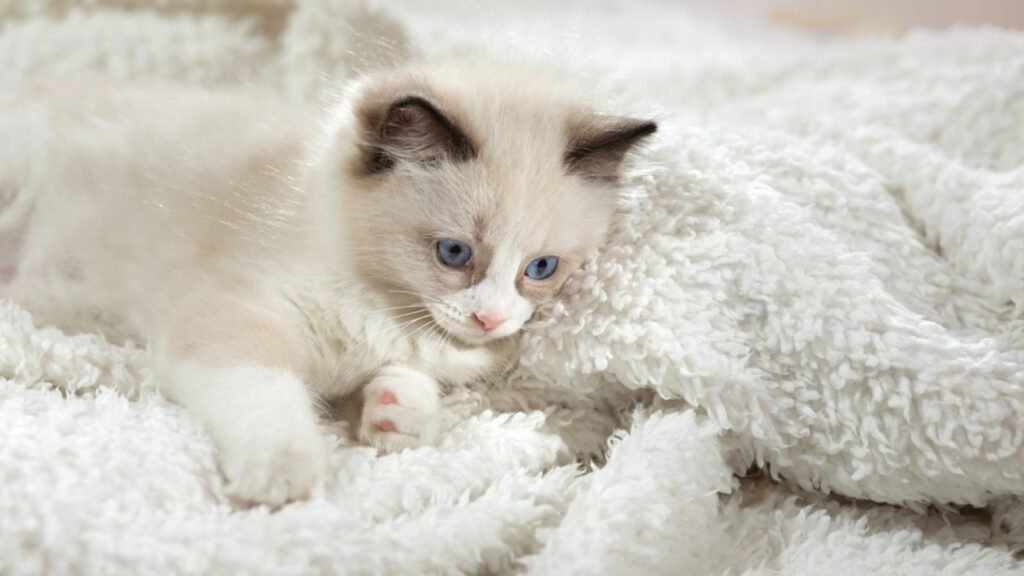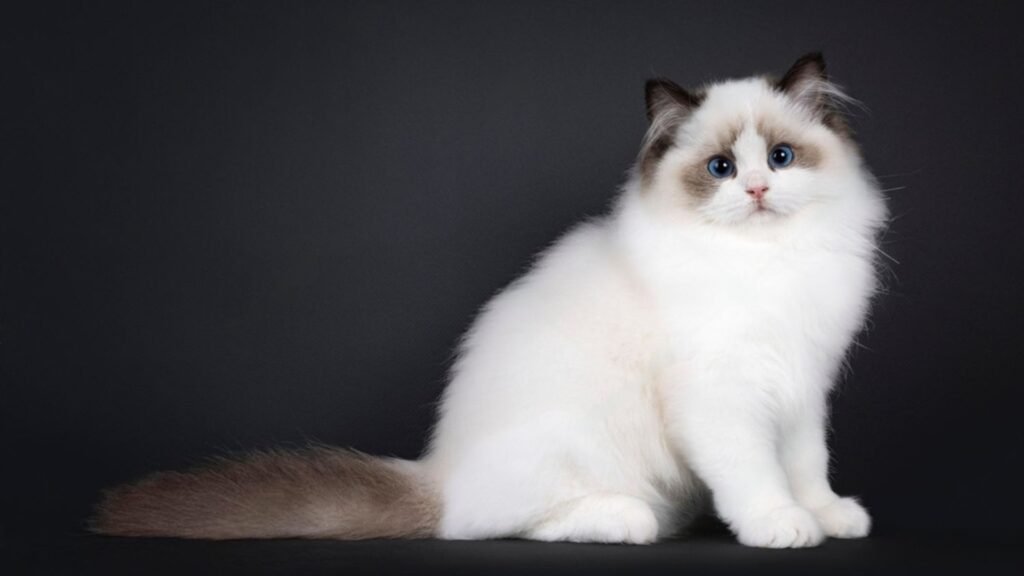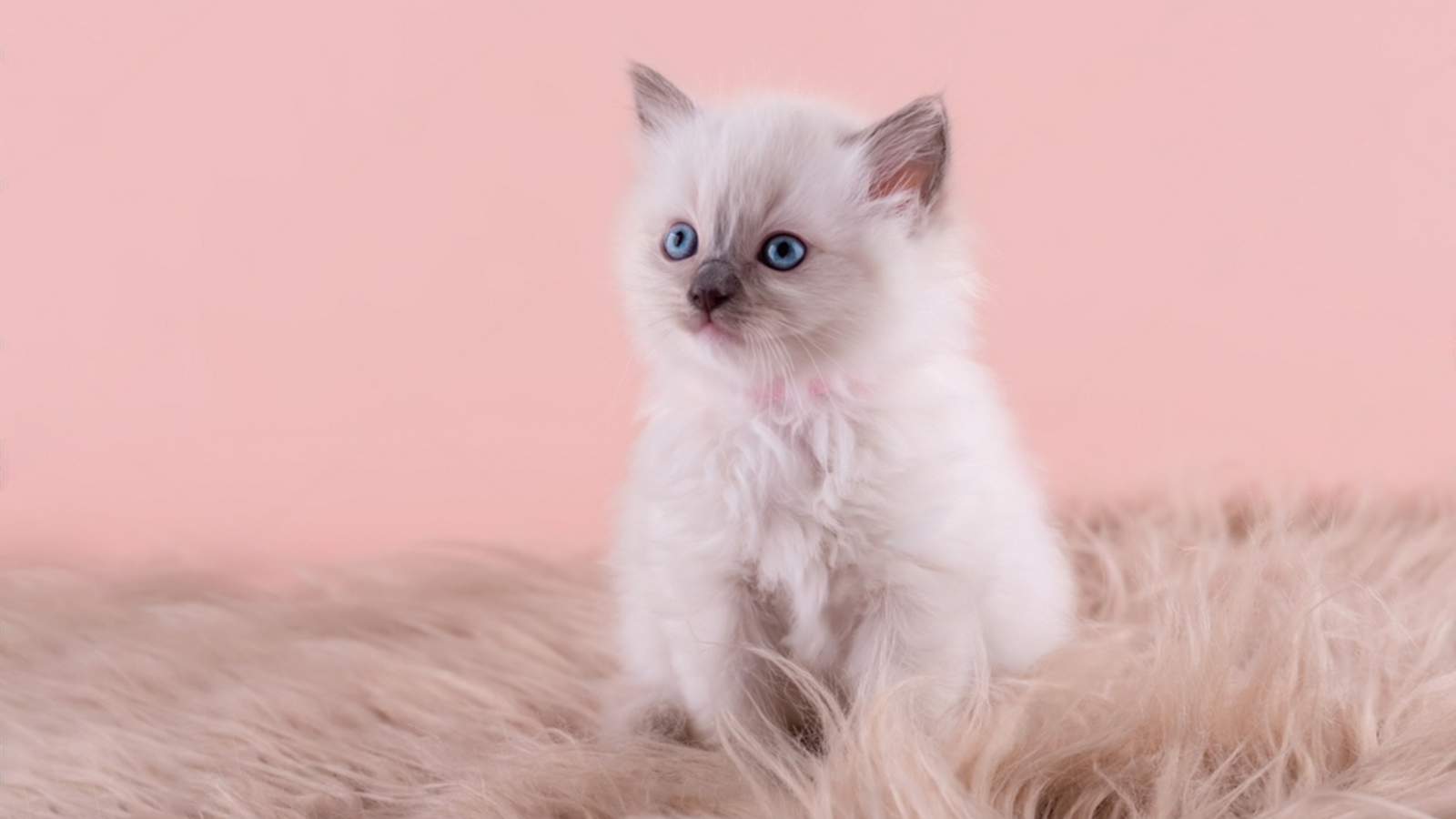- Seal – One of six TICA & CFA recognized ragdoll colors (seal, blue, chocolate, red, cream, lilac)
- Bicolor – One of three TICA & CFA recognized ragdoll patterns (bicolor, colorpoint, mitted)
Seal bicolor Ragdoll cat is a strongly sought after color and pattern of pedigree Ragdolls. They show off medium grade white fur (covering 30–50% of their body) with the intermingled pattern of warm seal colored points and patches. This distinctive mix down the road gives them an adorable look and prompts solid intrigue among pet darlings.
Related Read: Blue Bicolor Ragdoll Cat
Seal Bicolor Ragdoll Breed Overview
- Female Seal bicolor ragdoll weight: 10-15 lbs (4.53-9.07kg)
- Male Seal bicolor ragdoll weight: 15-20 lbs (6.80-9.07kg)
- Height: 23-28 cm
- Length: 16-21 in (40-53 cm)
- Life expectancy: 12-17 years
- Personality: Placid, Laid-back, affectionate, and people oriented.
- Get along well with: Solo, couples, families with kids & other pets.
Seal Bicolor Ragdoll Characteristics – Color and Pattern

- The primary coat color of seal point bicolor Ragdoll is of warm ivory or fawn that is rich and deep seal brown over their ears, tail tip, crown area, and forehead.
- Meanwhile, the intensity fades as we move down the saddle (back) and flank region, though the brown hue nicely set off against the surrounding white.
- The face displays a signature upside-down inverted “V” mask in pure white color around the eyes with a pink nose, unlike a seal or blue mitted ragdoll cat.
- As for their paws, the front feet of bicolor seal point ragdoll are evenly marked in snow white, and you’ll spot the same consistent white over their back feet that go straight up to the hocks. The tail mostly keeps white that goes halfway down and turns into a dark brown color at the very end (tip).
- Since the chin, chest, and belly are also white, the overall bicolor pattern gives off a symmetrical appearance to the seal bicolor ragdoll cat’s body.
Genetics Of a Seal Bicolor Ragdoll
The genotype of a seal bicolor Ragdoll cat is a combination of specific genes that work together to dictate its color, pattern, and physical traits.
Colorpoint Gene (cs)
Seal bicolor Ragdoll kitten kicks off almost entirely white at birth, with pointed color coming in around 2 weeks as its body temperature regulates. It’s a slow, fascinating process! The temperature sensitive colorpoint gene (cs) is responsible for the bicolor seal point ragdoll cat “points”. The pigment only devolps in cooler areas of cat body (snout, ears, paws, tail), although the warmer areas remain white. This even can vary from seal bicolor cat to cat and depends mainly on what kind of environment they live in.
Dilution Gene (D/d)
The dilution gene determines whether the coat color remains dense (non-diluted) or becomes diluted. In seal bicolors, the genotype is always D/D or D/d. The dominant D allele preserves the non-diluted, dense black-based color we recognize as seal (expressed as warm brown ragdoll). Though it can never be d/d since it dilute seal to blue (gray).
White Spotting Gene (Ss)
In Ragdoll cat seal bicolor, white spotting genes (S/s) create the breed’s symmetrical bicolor pattern. This piebald (white spotting gene) is the reason you see white chin and chest, white mitts on the front feet, evenly marked back paws, and an inverted “V” mask on the face. Unlike van, the seal bicolor Ragdoll cat’s medium-grade S/s genotype covers only 30-50% of the body area.
Ragdoll breeders use genetic testing to create a show or pet quality seal bicolour Ragdoll. From its points to its white accents, the bicolor Ragdoll is a living lesson in feline genetics!
Seal Bicolor Ragdoll Cat Personality & Temperament

Seal point bicolor Ragdolls do hold the same traits that pedigree Ragdolls are prevalent for, such as affectionate, sweet, and loving personalities. You’ll find they feel so content sitting on your lap, cuddling with you, and learning new tricks by following you! Their big, blue eyes and dog-like size add to their charm.
Unlike other cats’ traits like aloofness and independence, seal bicolor ragdoll cat prefers being with their owners. They adapt very well to different settings, whether it’s a busy family with respectful kids or a quiet home with just one person.
Despite their calm demeanor, they retain brief bursts of kitten-like activity well into adulthood. Playfully chase things or sprawl out in their favorite spot to keep an eye on the goings-on. Since they’re people oriented, laid back cats, they can get bored and stressed out if left alone for over 8 hours a day.
If you’ve a very hectic schedule and don’t have your spouse or family to look after your seal bicolor behind you, we don’t recommend having this breed.
How Much Does a Seal Bicolor Ragdoll Kitten Cost?
For a pet quality seal bicolor ragdoll kitten, expect to pay around $2500-3000. A show quality seal bicolor kitten costs even higher, up to $4000, though. Prices may vary based on lineage, coat quality, and ragdoll breeder reputation.
You can also adopt a bicolor Ragdoll adult through cat rescue groups or animal shelters, and it’ll cost you way less ($400 to $1000). Whether you buy or adopt, stick with reputable breeders or trusted adoption agencies. It’s the best way to ensure your new pal is healthy and well-cared-for before you bring them home.
Seal Bicolor Ragdoll vs Seal Lynx Bicolor Ragdoll Cat
The key differences lie in their facial markings. Seal bicolor Ragdoll cat traits include solid brown points on their face, ears, and tail paired with a white upside down inverted “V” facial mask, mittens, chest, and underbody.
Meanwhile, Seal Lynx Bicolor Ragdoll cats, often called Seal Lynx Point Ragdolls or simply Lynx Point, share those same brown points and white pattern, though with the additional characteristic of stripes on their face, body, and tail. These stripes add a subtle tabby-like texture and give their coat a multi-dimensional look.
Wrapping Up…
If you’ve read this far, starting from the dawn, you must already be in love with the seal bicolor ragdoll cat signature inverted “V” face mask and generous personality. They carry dilution, colorpoint, and piebald (white spotting) genes and feature seal brown points against a white backdrop. Their initial cost and upkeep cost ($265 to $750 per month) are steep, though they seamlessly fit in any sort of family as long as you’re there to keep them company and pampered!
Written By: Usman Malik | Reviewed By: Ali Abbas | Fact Checked By: Aqib Zulfiqar








